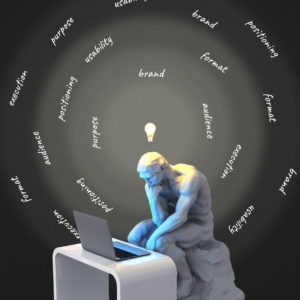When you have your business logo designed, thinking only about how it looks is common. A lot fail to see that there is more to your logo design than just aesthetics. If you want a logo design to work, not just a decoration but can be an actual business asset that can help you stand out in the market, create the right kind of impression, appeal to your target audience, and be useful for years to come, you should learn about these seven essential considerations for an effective logo design below.
1. Purpose of an Effective Logo
A common misconception in logo design is that it needs to show or communicate what you do. Understand that its purpose is not for communication but for identification.
The problem with adding what you do in your design is it places you in a box and can no longer grow or expand your offers. It makes your design and brand look generic and sometimes cartoony. Look at Mcdonalds, Nike, Apple, and other top brands’ logo designs. None of their logo designs show what they do.
If you want to communicate what your business does, use your website, social media posts, flyers, and other marketing materials.
2. Brand Definition
Clarify what your brand is about – what you do, what you believe in, what you offer, and what problems it solves. If your brand was a person, how would you describe it? What kind of culture would you want to promote within your team? What type of relationship would you want to have with your clients? You can take all these details about your brand and use them as a design direction for your logo.
A Design that perfectly reflects who you are as a brand. The better you know your brand, the easier it is to visualize how your logo’s execution.
3. Ideal Audience
Do not try to make the logo design project about you. Just because your favorite color is blue does not mean it should be the same as your logo. Remember, this is not about you. The logo design is for your brand. Not unless for personal branding.
Think about who your target audience is. What brands are they attracted to? Create a list of these brands. You can see a design pattern that you can use for your creative direction.
Be specific with your targeting since different demographics have different tastes. Remember, trying to market to everyone is marketing to no one. The same goes for branding and logo design.
4. Competitor Research and Positioning
One of the main goals of having a logo design is to help you stand out from the competition and be easy to remember by your ideal audience. You do not want to look the same as other companies’ designs and create an impression that you’re offering a cheap imitation.
You can avoid this by listing your direct competitors and gathering their logo designs. Note down the kind of impression each design creates and place them in a brand positioning grid. Once all the competitor’s logos are on the grid, see which areas are empty and select where to position your brand to give it the best chance to stand out. Use the decided positioning as one of your design direction considerations.
5. Design Execution
There are several logo design styles you can choose from. It’s not only the graphic with the text you mostly see. You have monograms, letter marks, mascots, emblems, and more. Each has its strengths, and some work better in specific industries. Discuss the best approach you would like to take with your designer and choose one to two, so you can focus your efforts and save on time.
When executing your designs, aim to have them look good years from now. Create a timeless design by avoiding design trends.
6. Design Usability
Think about where the logo design is going to be placed or applied. List them down and keep these in mind when designing the logo. It should have to work on these applications. It is why most logo designs are clean and simple to make the design work on any application and scale, whether in a single color, embroidered, or as an icon.
7. File Format
When designing your logo, use the correct design format and software. Always ask your designer to have the logo in vector format and done in vector-based software like Adobe Illustrator or Corel Draw. Vector-based designs will not lose their quality and remain in high resolution no matter how much you adjust their size or how large you have it printed.
Conclusion
An effective logo design goes beyond aesthetics. When you judge a logo by how it looks alone, this can make it very subjective. Sometimes the feedback and design direction suggestions you receive bring you nowhere near your business objectives for the design. It is why you should always consider the other essential factors if you want a design that is timeless, distinct, versatile, perfectly reflects your brand persona, appeals to your ideal audience, and helps you stand out from the competition.
If you need help creating a goal-driven and effective logo design, send us a message. We’d be happy to help build your brand. Click here if you want to learn more about our logo design services.

